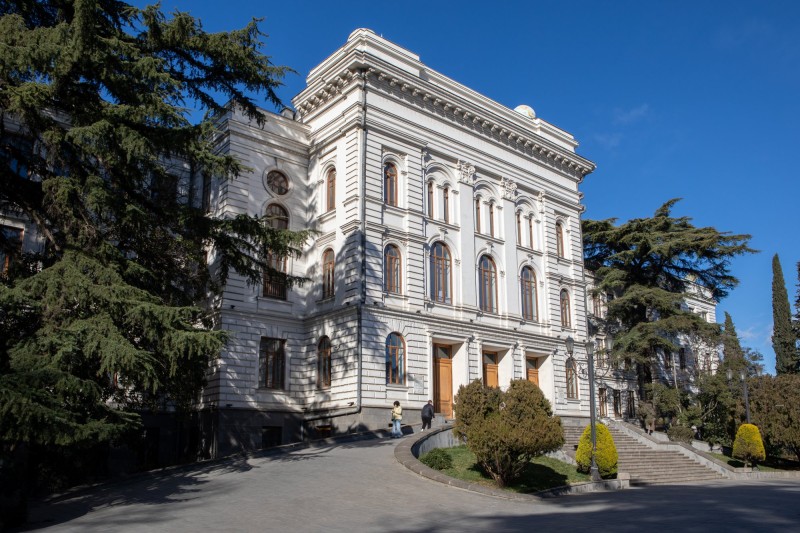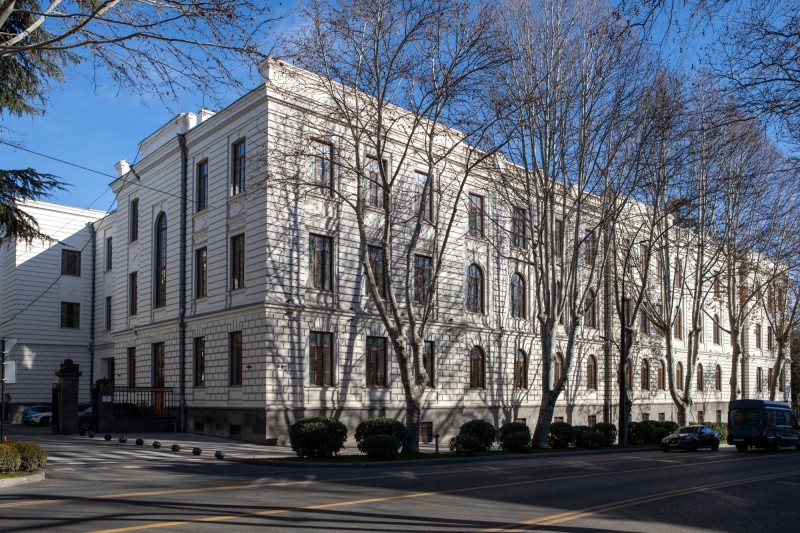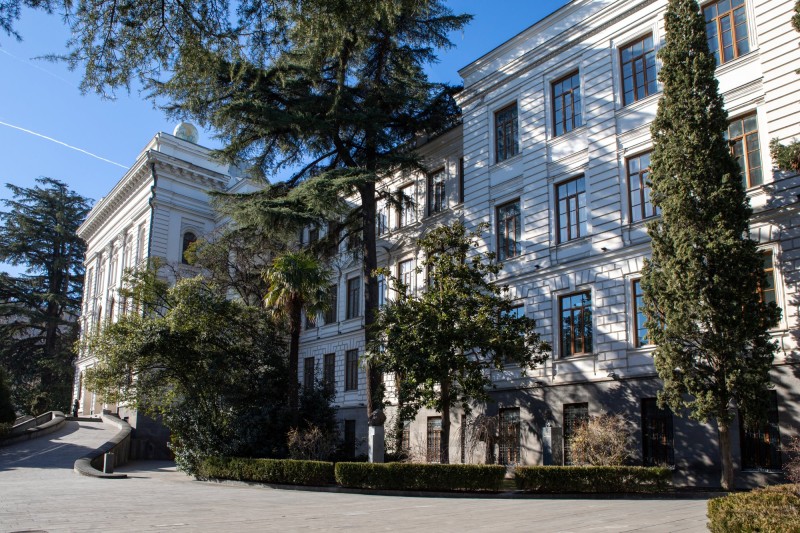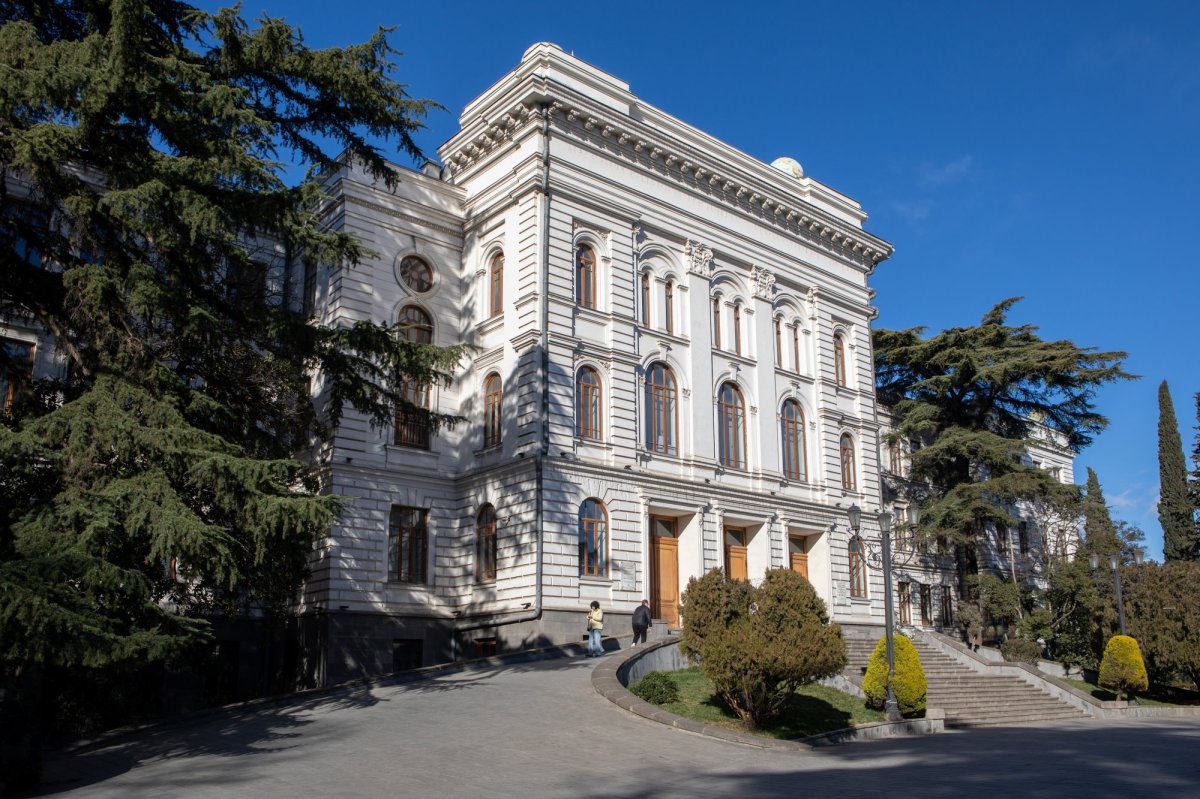
Information in details
Located at 1-3, Ilia Chavchavadze Avenue, the building of the first block of Javakhishvili Tbilisi State University has a special significance for the history and culture of Georgia. Although the building was conceived as a university by Georgian public figures, initially it was built for a private nobility high school, because under the conditions of the Russian Empire, the Georgian side could not get permission for the construction of a higher education institution. The higher education institution was established in the mentioned building on February 8, 1918, and after the independence of Georgia, on September 3 of the same year, it was named Tbilisi State University. At that time, it was the only university in the entire Caucasus.
On May 22, 1897, the well-known public figure, Niko Tskhvedadze, raised the issue of building it at the meeting of the Society of Nobility of Tbilisi Governorate. It was no coincidence that Simon (Swimon) Kldiashvili, the only professional architect working in Georgia at that time, was invited to implement such an ambitious, national project. In 1899, Svimon Kldiashvili already had a draft project ready, but the construction started on October 14 (26), 1900, when the foundation of the new school building was laid in the presence of the public. On November 26, 1906, a Georgian gymnasium was located in a certain part of the building, although the construction of the building was completed only in 1916, for which, in total, at that time, a colossal amount of 690 thousand gold manats was spent.
The building of Tbilisi State University, together with the extensive garden designed with it, plays a special role in the urban planning of this part of the city. The building is distinguished by its volume and high artistic-architectural value. As the main architectural dominant of the existing development, it immediately attracts attention. An asymmetrical building with a Russian Ш-shaped plan is distinguished by a simple, balanced composition of monumental facades divided by large window openings, refined proportions, and austere decoration. The main facade facing the east, towards the garden, is characterized by a special solemn appearance with a portico in the central part. It is easy to see that the building has the traditional look of a higher education institution, which once again indicates that it was conceived as a university from the beginning.


 თბილისი, Ilia Chavchavadze Ave N1-3 (ნაკვ.10/030)
თბილისი, Ilia Chavchavadze Ave N1-3 (ნაკვ.10/030)
 41.7106185, 44.7786381
41.7106185, 44.7786381






